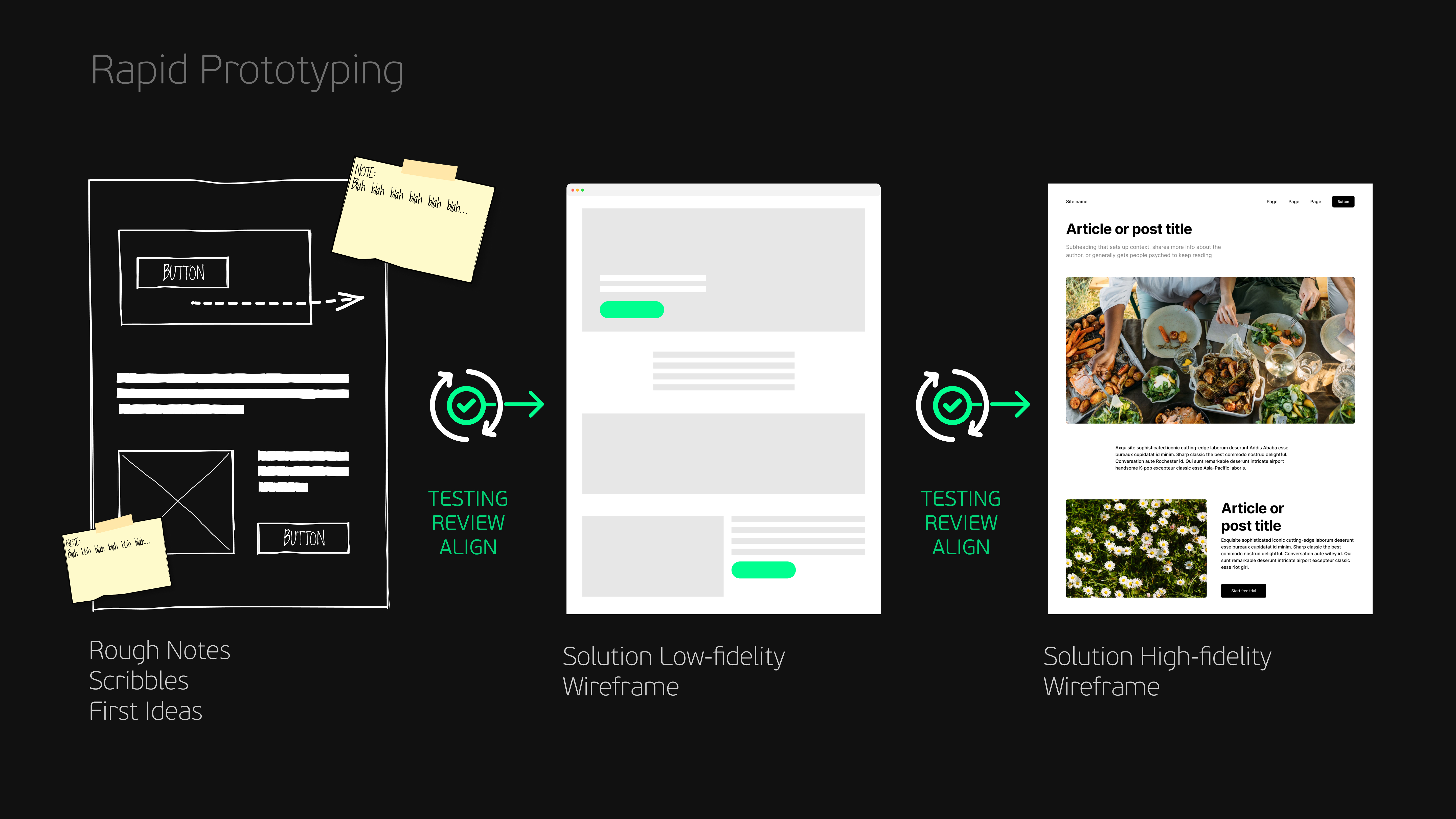
In the dimly lit office, enveloped by the night's shadows, marketing employee Marie, trembling, approached her boss. Her footsteps reverberated through the vacant corridors like an ominous premonition. As she finally stood before his desk, a heavy silence descended upon her, akin to an impending storm. With quivering lips, she confessed the harsh reality: "We're witnessing a steady decline in users on our website... and I'm at a loss for how to halt it." Have you ever been in Marie’s shoes?
Had Marie been aware that rapid prototyping of digital systems, she could swiftly enhance the attractiveness of her website to users, she could have taken immediate action. With new design trends, navigation methods, and evolving user behavior constantly shaping visitor expectations, websites can quickly lose their appeal. Those who create a website and neglect its ongoing refinement risk losing users, experiencing decreased conversion rates, and tarnishing the overall brand image. With rapid prototyping in UI/UX design, you avoid expensive risks and quickly achieve user-centered website optimizations.
Rapid prototyping in UI/UX design is an agile approach that empowers marketing agencies, clients, and their collaborative teams to efficiently implement new ideas and visions together. A digital UI/UX design prototype significantly simplifies communication and collaboration within the team and helps to convey and test concepts, obtain feedback and evaluations, and align the views of everyone involved in the shortest possible time.
Every thriving online presence must cater to a multitude of user needs and interactions. Internally, there are often divergent visions regarding the final product, stemming from various departments such as marketing, research & development, or sales. By comprehending and incorporating these perspectives into the design, alongside the needs of the target audience, they can significantly contribute to the website's success.
"Workshops with the client greatly accelerate website development!"
A significant advantage of UI/UX design lies in the gradual integration of valuable approaches and ideas into development, enabling direct implementation to cultivate user-optimized experiences through a collaborative process. This is particularly effective in joint workshops, which greatly expedite website development. Here, all participants gain a deeper understanding of the project while engaging in valuable exchanges, fostering continuous improvements through iterative cycles.
“When we all combine our strengths together, we are clearer and more focused at the end of the day. A win-win situation for everyone involved, but especially for the user.”
Michael Hauer, our Creative Director and expert in UI/UX design
To enhance the website, the user experience is initially tailored based on jointly defined target audiences, and optimal user flows are identified. Our UI/UX designers construct a low-fidelity prototype atop the website's objectives, serving as an early, rudimentary rendition illustrating fundamental functionality and user flow. Emphasizing user-centered structure and functionality, distinct from design, this prototype outlines the user flow— the sequence of steps a visitor must navigate on the website to achieve a conversion— depicted in a diagram. Tools like Figma or Sketch facilitate this process, aiding our developers in swift iterations. They enable direct navigation with the client to evaluate if the concept meets the desired solution. Adjustments can be made as needed, optimizing the design accordingly.

Initially, we collaboratively define goals with the customer. Subsequently, we conduct a comprehensive analysis, examining both page metrics and scrutinizing website content. Concrete empirical values are derived from employee surveys on website usage. In the UX assessment, we evaluate the existing navigation and page structure to optimize or redesign it based on our findings. Next, we craft the initial page prototypes, seamlessly integrating the obtained results. Throughout the process, our primary focus remains on user-friendliness, addressing core questions such as intuitive navigation and loading times while devising effective solutions.

Rapid prototyping is a swift and cost-effective method in UI/UX design, significantly boosting the efficiency of the design process. Emphasizing user-centered development, collaborative efforts ensure that everyone involved attains a shared objective. This approach offers flexibility and responsiveness, facilitating cost-effective error detection and correction for every website. By aligning the needs of users with company goals, you stay one step ahead—unlike Marie.
